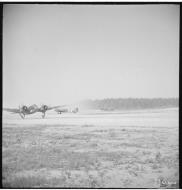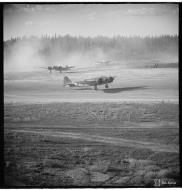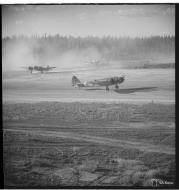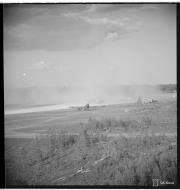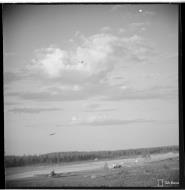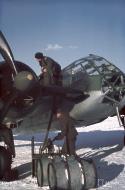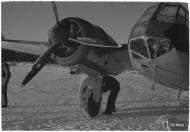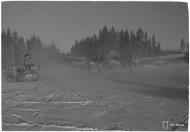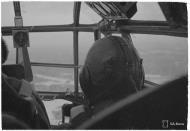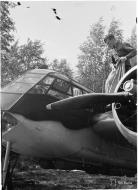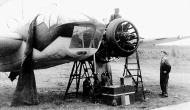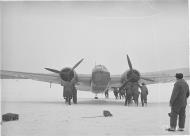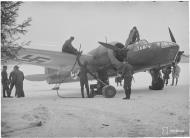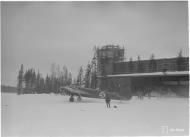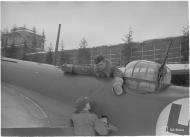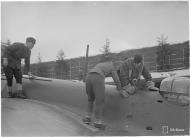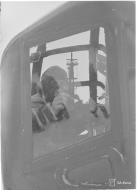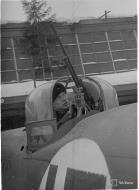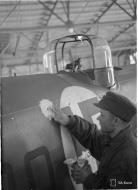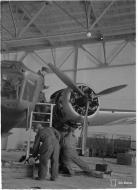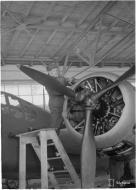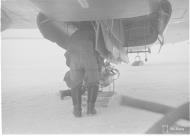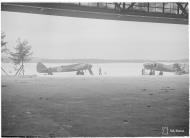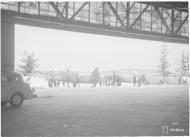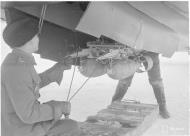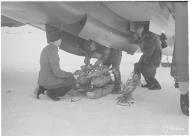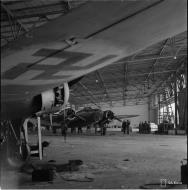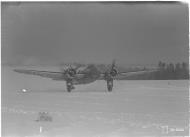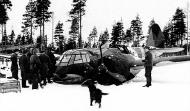Finnish Air Force Bristol Blenheim's mixed photo gallery
Artwork Blenheim MkIV FAF PLeLv 48 Majuri Erkki Ahtiainen BL-201 Onttola Finland 1944 0A
Blenheim Mk.IV (series VI) Unit: PLeLv 48 Serial: A (BL-201) Pilot - Majuri Erkki Ahtiainen, CO of PleLv 48. Onttola, August-September 1944. The Squadron emblem in 1944 was a devil riding a falling bomb. Usually it was painted on a silver colored background. The 'A' on the rudder was a tactical marking.
Artist: © Jouni Ronkko 'Jones' Source: FAF Aircraft In WWII
Artwork Bristol Blenheim MkIV FAF LeLv 42 BL-129 Finland 1942 0A
Bristol Blenheim MkIV BL-129 of ValokLtue Ahtiainen LeLv 44
48th squadron used Bl-129 during 1942 for reconnaissance missions deep into Soviet territory. A photo from November 1942 shows the rudder of the plane with 95 successful mission marks and a 'Farting Elk' at Tiiksarvi air base mascott. The crew is from left gunner Hammaren, navigator Ahtiainen and pilot Aijo who later was awarded the Mannerheim Knight Cross.
Source: Revi 40 2001
Bristol Blenheim MkI FAF BL-134 ferry flight from Britain to Finland Feb 1940 0A
Bristol Blenheim BL-134 during a ferry flight from Britain to Finland in February 1940. The plane was of a standard RAF type and the camouflage was standard too, uppersurfaces in Dark Green (FS 34079) and Dark Earth (FS 301 IB), undersurfaces black. This plane was assembled from two ones thus the fuselage and tailplane are in an A scheme and the wing in a B scheme camouflage pattern. The insignias are painted over and the civil registration is added. The Finnish BE-134 code shines through. All armament was removed for the ferry flight.
Source: Revi 40 2001
Bristol Blenheim Mk.I FAF BL-110 force landed Pyhajarvi Lake Revi 40 2001 Page 37
Source: Revi 40 2001 Page 37
Bristol Blenheim MkI FAF 1.LeLv44 BL 117 flown by V Salminen Feb 1940 0A
Bristol Blenheim BL-IJ7 in February 1940, 1st flight, 44th squadron, piloted by lentomestari V. Sabninen. This plane was built in Britain and belonged to the 1st series delivered to Finland between 1936 and 1938. Small fuselage windows and landing lights were different from RAF machines. All fuselage, engine nacelles, wing and tailplane uppersurfaces in Olive Green (FS 34096), the rest in Light Grey (FS 36440). A white skull, bomb and number on rudder were painted after the 21st succesful bombing mission.
Source: Revi 40 2001
Bristol Blenheim MkI FAF LeLv42 BL-136 over Luonetjarvi airfield
Bristol Blenheim MkI FAF LeLv42 BL-137 being guided by a runner to the runway Jun 1941
Bristol Blenheim MkI FAF 1.LeLv44 BL-149 usually flown by Erkki Ahmo Onttola Oct 1941
Photo: BL-149 as used by 1st flight of 44th squadron photographed here at Onttola air base at the beginning of October 1941. This particular plane was mostly flown by the flight leader kapteeni Erkki Ahmo. Another pilot was kersantti Urho Oksala (the man in a black jumper), later awarded by Mannerheim Cross 2nd class.
Profile: Bristol Blenheim BL-149. 1st flight. 44th squadron in November 1941. Blenheims from BL-146 to BL-160 were built at Valtion Lentokonetehdas in Tampere. These planes had machine guns in both wings, small fuselage windows, bulged bomb bay door and 8 cm shorter wingspan. Ski undercarriage could be completely retracted. The plane is in a standard Finnish so-called " war “ camouflage. Uppersurfaces in irregular fields of Olive Green (ES 34096) and black, undersurfaces in Light Grey (FS 36440). Fuselage band and bottom wingtips in Yellow (FS 13655). Ace of diamonds is painted on the left nose panel, a wolverine emblem on the left side of the nose according to the pilot kapteeni Ahmo's surname.
Source: Revi 40 2001 Page 37
Bristol Blenheim MkIV FAF BL-197 1.LeLv42 during engine maintenance June 1944 Revi 40 2001 Page 37
Source: Revi 40 2001 Page 37
Bristol Blenheim MkIV BL-200 in Aviation Museum of Central Finland 01-02
Pommituslentolaivue 42 mixed photo's
(Finnish: Lentolaivue 42 or LLv.42, from 3 May 1942 Le.Lv.42) [3]Aircrew FAF LeLv42 from L Oiva Hyttinen Armas Eskola and Kai Havola Luonetjarvi July 1941[3]
Bristol Blenheim MkI FAF LeLv42 BL-135 Armas Eskola was hit by MkIV BL131 Luonetjarvi [3]
Bristol Blenheim MkI FAF LeLv42 BL-135 Armas Eskola was hit by MkIV BL-131 Luonetjarvi Finland 27th Nov 1940. Was operational by March 1942[3]
Bristol Blenheim MkI FAF LeLv42 warming up their engines Luonetjarvi Finland [3]
Bristol Blenheim MkI FAF LeLv42 warming up their engines Luonetjarvi Finland First raid of the Continuation War with 9 bombers taking part. Target where tanks at Tyrja and Ihala. First three aircraft are BL-145, BL-139 and BL-141[3]
FAF groundcrew working on the beach and enjoying the summer weather Finland 01-02
BL-137 aircrew Oiva Hyttinen Martti Keinanen Niilo Hakala and War Correspondant Hugo Valpas
BL-137 Erkki Akerlund helps War Correspondant Hugo Valpas to board
Bristol Blenheim MkI FAF LeLv42 BL-132 at Immola June 1942
Bristol Blenheim MkI FAF LeLv42 BL-136 over Luonetjarvi Finland Aug 1940 01
Bristol Blenheim MkI FAF LeLv42 BL-137 landing accident Pori Finland 21st May 1940. Overran the landing area and hit a Caterpillar tractor all okay.
Bristol Blenheim MkI FAF LeLv42 BL-139 Luonetjarvi Finland summer 1940
Bristol Blenheim MkI FAF LeLv42 BL-139 Luonetjarvi Finland Jan 1941
Bristol Blenheim MkI FAF LeLv42 BL-141 Luonetjarvi Finland 1941
Bristol Blenheim MkI FAF LeLv42 BL-142 making pre taxi checks 01-02
Bristol Blenheim MkI FAF LeLv42 BL-142 flown by Torsten taking off 01
Bristol Blenheim MkI FAF LeLv42 BL-142 and BL138 making pre taxi checks 01
Bristol Blenheim MkI FAF LeLv42 BL-143 with the axis camouflage scheme 1941
Bristol Blenheim MkI FAF LeLv42 BL-143 with Lauri Raatari and Vaino Taiainen
Bristol Blenheim MkI FAF LeLv42 BL-143 Sulo Rikkinen with RAF life vest Noljakka July 1941
Bristol Blenheim MkI FAF LeLv42 BL-154 and BL138 foreground with wooden props 01
Bristol Blenheim MkI FAF LeLv42 covered with Fokker C.V FO76 communications aicraft
Bristol Blenheim MkI FAF LeLv42 night camouflage at Noljakka dispersal area Jul Aug 1941 01-02
Bristol Blenheim MkI FAF LeLv42 warming up their engines Luonetjarvi Finland 4th July 1941.[3]Due to flak damage over Leningrad BL170 had a hydraulic leak and had to make a belly-landing[3]
Due to flak damage received over Leningrad LeLv42's Bristol Blenheim MkI BL-170 had a hydraulic leak and its crew had to make a belly-landing at Suulajarvi 29th Dec 1943. The aircraft was piloted by[3]
FAF LeLv42 BL-106 prepares for a ferry flight from Nurmoila to Vartsila 23rd Jun 1943
FAF LeLv42 BL-115 had a malfunctioned ski which caused the crash at Vartsila Feb 1943
BL-115 of 3rd flight, 42nd squadron after a forced landing in Vdrtsila, March 26, 1943. Note the ski run through the wing.
Source: Revi 40 2001 Page 37
FAF LeLv42 BL-132 reconnaissance mission to Lake Lempaala near Leningrad 15th May 1942
FAF LeLv42 BL-135 Armas Eskola was hit by MkIV BL-131 Luonetjarvi 27th Nov 1940 01
FAF LeLv42 BL-137 Erkki Akerlund helps War Correspondant Hugo Valpas to board
FAF LeLv42 BL-137 was destroyed by Soviet Polikarpov I 16s strafing Vartsila Sep 1941 01
FAF LeLv42 BL-140 had engine failure after take off Vartsila 29th Sep 1941
FAF LeLv42 BL-142 forced landed on a swamp at llomantsi 1st July 1943
FAF LeLv42 BL-151 being dismantled at Vartsila after being damaged during take off 25th May 1941
FAF LeLv42 BL-152 ice up carburetors caused this take off crash Kuhilasvaara 7th Nov 1942
FAF LeLv42 BL-154 at Vartsila was later lost on a raid to Varbenitsa 15th April 1942
FAF LeLv42 BL-154 crew Erkki Katajisto Armas Eskola Sulo Rikkinen Lauri Raatari 6th Feb 1942
FAF LeLv42 BL-155 crew Cpl Tauno Kippola Navigator Antti Heilimo and pilot Martti Immonen at Nurmoila Finland Mar 1944
FAF LeLv42 BL-155 had a punctured tyre which caused the crash at Vartsila 4th May 1943
FAF LeLv42 BL-157 crew Sgt Sulo Rikkinen and Sgt Valto Laurila at Vartsila 23rd Dec 1941
FAF LeLv42 BL-158 crew prepare for a recon mission to Tsolmusa and Per Navalok 6th Feb 1942 01
FAF LeLv42 BL-158 crew Heikki Nasinlinna pilot Terho Leppa and Jorma Tolonen Immola 29th June 1942
FAF LeLv42 BL-162 prepares for a ferry flight from Vartsila to Nurmoila 26th Oct 1943
FAF LeLv42 BL-162 commences its ferry flight from Vartsila to Nurmoila 26th Oct 1943
FAF LeLv42 BL-170 force landing after running out of fuel 18th Jan 1944[3]FAF LeLv42 Blenheim MkI's preparing for the Petrozavodsk Railway mission BL-111 with BL-138 (foreground) 28th Sep 1941[3]
FAF LeLv42 Blenheim MkIs preparing for the Petrozavodsk mission BL111 n BL138 (f) 28th Sep 1941[3]
FAF LeLv42 Blenheim MkI's taking off for a mission from Vartsila Airfield Finland Sep 1941 01
FAF LeLv42 enroute to bomb the Murmansk railway 15th Oct 1941 01
FAF LeLv42 Fokker C.V FO76 communications aicraft at Onttola
FAF LeLv42 Lauri Raatari helps lift a Carl Zeiss RB75 30x30 camera Vartsila 1942
FAF LeLv42 MkIs preparing for the Petrozavodsk mission BL-111 n BL-138 (f) 28th Sep 1941 01
FAF LeLv42 personnel refueling the warmed up engines of a fronzen Blenheim MkI Vartsila 1942-43
FAF LeLv42 personnel warming up the engines of a fronzen Blenheim MkI Vartsila Finland 1942-43
FAF LeLv42 photos taken by war correspondent Niilo Helander Vartsila 11th Dec 1943
FAF LeLv42 showing their aircraft to fellow Luftwaffe airmen Vartsila Finland Sep 1941 01-02[3]LeLv42 BL-155 left and BL-156 (later deployed Lapland War 18th Oct 1944) ready to leave for Naarajarvi 1944
LeLv42 BL-169 with navigator Erik Anttinen and pilot Pentti Aro at Onttola 22nd June 1944
LeLv42 BL-178 lead pilot Capt Aimo Huhtala along with BL-200 and BL-196 after a mission at Onttola
LeLv42 BL-196 flown by Pekka Parviainen seen here after refueling at Onttola
LeLv42 BL-197 being serviced was usualy flown by Capt Tauno Kangas 1944
LeLv42 BL-199 was the 2nd lead plane flown by Erkki Palosuo seen here being refueled at Onttola
LeLv42 BL-200 was piloted by Paavo Alava and on the left BL-196 after a mission at Onttola
LeLv42 MkIs being loaded with 4x100kg 4x50kg bombs and 4x12.5kg detonators Onttola 1944[3]Aerial photo of the Finnish Air Force base at Värtsilä / Vartsila Finland 1941. LeLv42 relocated there for three months from Sep - Dec 1941[3]
Aerial photo of downtown Leningrad from 7000m bottom left is Hermitage Museum 9th Feb 1943[3]
Target July 11th 1941 Antrea Railway Station 01[3]
Incendiaries were on target but most of the other bombs missed their target.[3]
LeLv42 Target's: Aerial photo of the Soviet Airbase at Gorskaja nr Saint Petersburg 10th March 1944
LeLv42 Target's: Aerial photo of the Soviet Airbase at Levashovo nr Saint Petersburg 11th March 1944
LeLv42 Target's: Aerial photo of the Soviet Airbase at Komendantskoje nr Saint Petersburg 9th Feb 1943[3]Aerial photo of the Soviet Airbase at Komendantskoje nr Saint Petersburg 9th Feb 1943 was taken at 7000 m or 21,000 ft by BL-158 crew pilot was Tauno Kangas navigator Matti Autio and gunner Sgt Onni Rautava who report very accurate and heavy flak during their reconnaisance run and had wholes in the right wing[3]
Photograph source: Finnish Air Force Bomber Squadron 42 - Pommituslentolaivue 42 by Matti Hamalainen ISBN 13: 9789525186130 Publisher: Koala-Kustannus Publication Date: 2000 in my opinion one of the best books out there who's photo's here don't do the book justice. It has some great Black and White photo's on the MkI's
BRISTOL BLENHEIMS IN FINNISH SERVICE[4]
Finland, which had been an independent republic since 1917, entered WWII when Soviet troops attacked on 30 November 1939. For Finland, WWII was divided into three distinct parts.
(1) The Winter War: 30 November 1939 to 13 March 1940. (2) The Continuation War: 25 June 1941 to 5 September 1944. (3) The Lapland War: 28 September 1944 to 27 April 1945. (When the war with the Soviets ended in September 1944, the peace negotiations stipulated that the Finns were to assist in expelling the German troops who were retreating towards Norway.)
Non-Finnish readers are often curious about the light-blue swastika on a white disc that was the national marking for Finnish military aircraft until September 1944. The Finnish Air Force received its first aircraft as a gift from the Swedish Count Eric von Rosen in 1918. Since the Count's family good luck symbol, a blue swastika, was painted on the gift aircraft, it was adopted as the national aircraft insignia. After WWII. the Finnish national markings was changed to the present-day blue and white roundel.
THE BRISTOL BLENHEIM
The Royal Air Force ordered 150 Bristol Blenheim aircraft in August 1935 while the aircraft was still on the drawings boards. The Bristol Aircraft Company had designed and built a modern, all-metal, monocoque, twin-engine, fast passenger aircraft named "Britain First" which had flown four months before the RAF order had been placed. This design would be developed and modified into a fast bomber and reconnaissance aircraft: the Bristol Blenheim.
From the Blenheim Mk. I, Bristol developed in 1938 a longer version called the Mk.IV.
Blenheim Performance Data
Spec's Blenheim Mk.I Blenheim Mk.IV Weight 12,500 lb 12,500 lb Span 56 ft 4 in 56 ft 4 in Length 39 ft 9 in 42 ft 9 in Speed 285 mph 15000 ft 266 mph 11800 ft Ceiling 27,280 ft 22,000 ft Range 1,125 miles 1,450 miles Bomb 1,000 lb 1,320 lb Source: Purnell's History of the World War Bombers 1939-1945
Country Blenheim Mk.I Blenheim Mk.IV Great Britain 1,396 3,122 Finland 45 15* Yugoslavia 45 - Canada** 16 676** * Actually 10 were built in Finland; ** Bolingbroke Source: Geoff Green, Bristol Aerospace since 1910.
Canadian made Blenheim Mk.IV were named Bolingbroke and fhey were slightly different from the Blenheim, having. for example, de-icing equipment. The Finnish Blenheims never had such equipment. The Blenheims currently in the British Museums are all Canadian Bolingbrokes. The one and only genuine Blenheim lies in the storage room of Keski-Suomen Ilmailurauseo in Finland.
Because of the uncertain political situation in Europe in the mid-1930s, The Finnish Air Force began the search for a suitable bomber and reconnaissance aircraft. This was a long and complicated process, but in April 1936, the decision was made at last: the new aircraft would be the Bristol Blenheim. This was even before the the prototype and first production Blenheim Mk.I, serial number K7033, made its initial flight on 25.06.1936 and before the RAF reported that they were very pleased with the aircraft.
In October 1936, Finland formally became the first foreign customer to order the Blenheim when it signed an agreement to purchase 18 aircraft. These were called Series I Blenheims in Finnish service and they were flown to Finland by Finnish pilots on the following dates:
Delivery Date: Finish AF codes: 7/1937 BL-104, 105 12/1937 BL-106, 107, 108 2/1938 BL-109, 111, 112 3/1938 BL-110 6/1938 BL-113, 114 7/1938 BL-115 to BL-121 On 29 July 1937, the first two Blenheims landed at Helsinki; BL-104 flown by Captain T, Hannus was the first to touch down. Captain A. Eskola, in BL-105, was a couple of minutes late as he had to perform some tight turns above his home five miles north of the airfield. There were no special celebrations; the only people greeting the new aircraft were Major Alaraeri, Captain Pertamo, and some engineers. In a recent interview, Captain Eskola told the author that only reason Major Alameri meet the aircraft was because the Captain was bring British cigarettes.
The Series I Blenheims were all supplied without turrets and it required a lot of correspondence with the Bristol Aeroplane Co. before the turrets were delivered in the spring and summer of 1939. Fortunately, the Finnish Blenheims were fully equipped to fight when the Soviets invaded in November 1939.
The quality of the Blenheim was very high, but there were some problems. In some cases, the fuel pump became unserviceable after only a short time causing dangerous fuel leakage, One aircraft lost its reduction gear and propeller. The Bristol Co. was always eager to help in case of trouble. Their agent in Finland at that time was an Estonian businessman, Shura Reichel. Part of the correspondence between the factory and the Finnish Air Force went via him, but that was found to be unnecessarily bureaucratic, so later the information was delivered directly to the Air Force.
Finland is a country with innumerable lakes and a long coastline. It was seriously proposed to put at least one Blenheim on floats. In 1938, the Finnish Air Force asked Short Brothers and Bristol for details for such a conversion. Since at that time there were no Blenheims on floats, the information received was based on calculations. It transpired that the fuselage would have needed extensive strengthening for the floats and this would substantially reduce the carrying capacity of the aircraft. Nothings was said, of course, about the effect of the floats on the maneuverability of the aircraft.
During the winter it was difficult to keep the airfields clear of snow, so special skis were designed and constructed for the Blenheims. These were nonretractable and the resulting loss of speed was about 10%. On the other hand, it was possible to land on snow 70 cm thick, but not to take off. During the Winter War, some Blenheims with skis were involved in air battles near Suomussalmi and it was seen that aircraft so fitted had lost their good maneuverability. (Later, during the Continuation War, retractable skis were constructed. They proved to be quite good, although fragile.)
RETRACTABLE SKIS
The excellent maneuverability of the Blenheim is illustrated in the experiments made by Captain K. Kepsu before the war. The Fokker D-21 fighter pilots and Blenheim bomber pilots used to see who was best flying horizontal circles of 360 degrees. The Fokker pilots averaged 21-22 seconds and the Blenheim pilots 17-19 seconds. If the Fokker was pushed faster, it tended to go into an erratic movement. Kepsu's record with a Blenheim was 14 seconds. He says that he needed extra strength in the muscles to achieve that remarkable result.
LICENCE CONSTRUCTION
In 1938, Valtion Lentokonetehdas (State Aircraft Factory) bought the licence to manufacture Blenheim Mk.Is. The following year the Finnish Air Force ordered 15 Blenheim to be built as Series II aircraft. An attempt was made to obtain drawings for the Blenheim Mk,IV but time had run out. It would have taken too long to provide new drawings and to change the tooling. Therefore, they began to build Blenheim Mk.I, but because of the Winter War only 15 aircraft were completed by January 1942.
To build aero engines in the 1930s was the "high tech" of the day. When Oy Tampella Ab began to build the Mercury nine-cylinder radial engine under licence in 1938, they got instructors from the Bristol Co.: Mr. Wheeler-Kither, Mr. Adams, and Mr. Groundwater. Some Finnish experts, such as H. Backstrom and P. Savolainen, visited the Bristol factories at Filton. If the workmanship was good at Bristol, it was no less so at Tampella. Nevertheless, the Finnish mechanics still had much to learn. One of the new demanding tasks was the 100-hour type test, but Tampella succeeded without any trouble.
Mercury VIII: Power 720 hp at 2400 rpm at 12,500 ft; Max Power 795/825 hp at 2650 rpm
Mercury XV: Power 795/825 hp at 2650 rpm at 13,000 ft; Max Power 810/840 hp at 2750 rpm at 14,000 ftDuring the spring and summer of 1939, Captain A. Eskola made several photo reconnaissance flight over Soviet territory with a Blenheim. At first, an Eagle IV camera was used, but this camera was not suitable for the cold at 7,000 meters. Later, a Zeiss camera was used by Eskola.
Only once was the Blenheim detected by the Soviets. The oxygen pipe had broken away from the pilot's mask without his knowledge. After awhile he became unconscious and the aircraft began to make strange movements. Luckily the bomb aimer/navigator was able to give the pilot oxygen and they managed to get home without being intercepted by fighters. The Soviets also made many reconnaissance flights over Finland during the summer, but such flights are common on the eve of a war.
In the autumn of 1939, the Soviets had more aircraft than the Finns. In his book about the Winter War (Talvisota Ilmassa), Colonel Risto Pajari estimates that the Soviets had at least 800 aircraft near the Finnish border; 30% of these were bombers and 60% fighters. (Another source insists that the Soviets had 2000 aircraft in the same area.) In contrast, according to Pajari, the Finns had a total of only 116 aircraft and 30 of these were obsolete or worse. For the comparison, the British had 1089 Blenheim in September 1939.
THE WINTER WAR
The day after the war broke out, 01/12/1939, the disposition of the Blenheims was as follows: Lentorykmentti 4 (Flying Regiment 4) was subordinated to the Head Quarters and commanded by Lt. Colonel T. Soaierto. It had two squadrons: Lentolaivue 44 and Lentolaivue 46. Both were located at Luonetjarvi in the middle of Finland near Jyvaskyla. Lentolaivue 44 was commanded by Major E. Stenback and had eight Blenheims. The commander of Lentolaivue 46 was Major 0. Sarko and he had nine Blenheims. The remaining Blenheim was under repair at that time after experiencing an accident. The commander of the Finnish Air Force was General J. Lundqvist.
The Finnish Air Force lost its first Blenheim on this day. under the command of Captain K. Kepsu, three Blenheims from Lentolaivue 46 stood ready at Luonetjarvi waiting for the order for the first bombing mission of the Winter War. The weather was bad and it began to snow. (Under the California sun, it might be difficult to image how dark and short the days are in December in Finland.) In the late afternoon, the bombers were ordered to go. To achieve surprise, they flew well around the target area and approached it from behind. Each aircraft carried four 100-kg, four 50-kg, and four 12.6-kg bombs. The clouds were very low, about 100 meters, but the Blenheim could see a camp crowded with troops around fires, perhaps having their evening tea. Bombs were dropped although the safe altitude for this should have been at least twice as much. The explosions shook the planes and in the dark, bad weather, they got separated. After many difficulties, including flying along roads under the tree tops, two of the planes managed to land safely at Joroinen. The third, BL-110, headed for home at Luonetjarvi but then turned back, perhaps disbelieving their navigational calculations. After 10-15 minutes, the aircraft flew straight into a hill and was destroyed with its crew of three. Now the Finnish Air Force had only 17 bombers left.
The first Blenheim had Marconi radios and they were of inferior quality and they proved a great problem in bad weather, as in the case of BL-110. It was also impossible to communicate with our fighters. Later Finnish radios were installed and during the Continuation War we got excellent German FUG-10 radios which greatly pleased the radio operators/gunners.
As to the internal communication system, a reel of rope was part of the repair kit of every Finnish Blenheim until 1942. These were used on the rather frequent occasion when the telephone connection between the gunner and the pilot went out of order.
During Christmas our Air Force began to use all its skill and influence to acquire more bombers as quickly as possible. Finland was getting much sympathy and even promises of material aid from Western countries, so it was though that it might be possible to get bombers from Great Britain without any payment. The British approved the sale of 12 Blenheim, but we had to pay for them. Pilots were mobilized and flown from Helsinki to Stockholm and from there they went by train and ship to Great Britain. They picked up 12 Blenheim Mk.IVs, which were called Series III by the Finnish Air Force. One of these aircraft was lost on the flight over the North Sea; the weather was nasty and another plane nearly flew straight into the sea trying to descend below the clouds. One Mk. VI crash-landed in Sweden and was only repaired on 5.6.1940. In February, 12 more Blenheim Mk.I were purchased from the RAF. These were called Series IV. and they were flow to Finland by British pilots.
The armament, fitted to the Finnish Blenheim was insufficient. The two-gun turret was never used. The veteran gunner, E. Lindqvist, remembers that the gunners sometimes shot at the enemy fighters with their signal pistols. This was effective since the fighter pilot automatically pulled aside from the dangerous looking explosion. In some Blenheim, the bomb rack system was different from the British gear, but that was not a major modification.
The crew of the Blenheim consisted of pilot, bomb aimer/navigator, and gunner/radio operator. In Finland, the pilot operated the landing gear, but in the RAF they were operated by the navigator. In February 1940, one Finnish Blenheim was slightly damaged when a British pilot did not lower the undercarriage.
AERIAL COMBAT
During December 1939, the main operating areas for Finnish Blenheims were north-east of the Lake Ladoga and Repola and Sumussalmi situated half way up the eastern border. The missions were carried out mostly by single aircraft. The Soviet fighters were not as fast as the Blenheim, but even so we lost many aircraft during the war. Flak, weather, and enemy fighters took their toll. On February 1940, the Karelia Isthmus (between Lake Ladoga and the Gulf of Finland) became for the first time the operational area for our bombers. The third Blenheim squadron, Lentolaivue 42, was formed in January 1940. It was commanded by Captain A. Eskola.
In the beginning of March, the Soviets had a bridge-head on the western shore of the Gulf of Viipuri, southwest of the Karelia Isthmus. All flying regiments, including Lentorykmentti 4 were concentrating their operations against the advancing enemy troops which were moving over the frozen sea. Our Blenheim scored several air victories; e.g. Y. Hammaren had two official and one unofficial victories. One Soviet I-153 fighter went after BL-139 on 8 March 1949 and Hammaren got it with less than one hundred shots. Later on the 11th of March the same Blenheim had twelve fighters chasing it. The gun in the turret was the normal 7.7 mm Browning and the effective shooting distance was very short, about 50 meters. The other problem was that the ammunition drums were small and at long ranges they could be emptied before the target was near enough. Hammaren heard clearly the ticking sound from the four guns of the nearest I-153, but with one-hundred shots got a kill. The I-153 crashed into the courtyard of a Finnish officers' club. BL-139 dived for safety and the gunner changed drums just in time. With 37 shots Hammaren destroyed the next I-153. The other remaining fighters turned away.
The Bristol Blenheim was liked by the Finnish pilots. It was also regarded as very durable, this was a question of were the aircraft was hit. In January 1940, BL-115 was shot at by our own flak. (Inexperienced men were shooting at everything in those days.) The aircraft was hit by one fragment of flak which made a fist-sized hole in the fuselage, but that was enough, as the control wires were cut. The pilot, Oksala, was able to steady the Blenheim by using the engines and got it down on a frozen lake. The damage was negligible.
The same crew, in another Blenheim, came near to loosing their lives again on 26 February 1940. BL-119 was attacked by an enemy fighter which shot both engines into flames and destroyed the instrument panel. The rudder and elevators were also put out of order. With only seconds to spare before the aircraft struck the ground, pilot Oksala managed to crash land in a clearing in the woods. The Blenheim was a total write-off, but the crew of three plus a passenger escaped unharmed.
AIR VICTORIES BY BLENHEIMS DURING THE WINTER WAR
Date: Place: Plane: Gunner: Victim: 20.12.39 Mantsi BL-106 Mtirsky I-16 01.03.40 Kolvisto BL-132 Morsky I-16 08.03.40 Virolahti BL-139 Hammaren I-153 10.03.40 Muhulahti BL-145 Hamalainen I-153 11.03.40 Kiiskila BL-139 Hammaren I-153 11.03.40 Suur-Merijoki BL-139 Hammaren I-153 During the Winter War, Blenheim were used for bombing, photographic, and reconnaissance missions. Of course, bombing and reconnaissance were often accomplished on the same mission. Strafing enemy troops were also done, but with little effect; a couple of small calibre machine guns are not especially lethal. Bombs were dropped on enemy camps, troop concentrations, railroads, railway stations, gun posts, aircraft bases, etc. Results would have been better if Blenheim had been a dive bomber. However, the enemy always had to be afraid of the possibility of getting some bombs dropped on him. Even with limited resources, it was many times possible to delay the advancing Soviet troops critical hours or days. Well accomplished missions were also very good for our combat morale. Very important were the results of reconnaissance and photographic missions.
When the hostilities ceased on 13 March 1940 and the Winter War was over, Finland remained independent, though we lost part of our territory, Karelia, to the Soviets. It is a fact the without the bomber force the results of the war could have been worse for us.
BLENHEIM LOSSES DURING THE WINTER WAR
Aircraft: Date: Dead: Wounded: Cause: BL-110 01/12/1939 3 Bad weather BL-112 06/01/1940 Fighter BL-127 18/01/1940 2 Bad weather BL-121 19/01/1940 3 Fighter BL-108 28/01/1940 3 Bad weather BL-123 14/02/1940 2 Engine trouble BL-113 18-02/1940 2 Fighter BL-119 26/02/1940 Fighter BL-126 29/02/1940 Engine trouble BL-144 07/03/1940 2 Fighter BL-122 07/03/1940 2 Fighter BL-133 10/03/1940 3 Fighter BL-140 11/03/1940 1* * Bomb aimer shot, the plane did not crash.
PARTS FROM YUGOSLAVIA and POLAND
During the Continuation War, spare parts and other material for Mercuries and Blenheim were not available from Great Britain. However, it was discovered that there were a lot of complete engines and spares in Warsaw and also some other, places governed by the Germans. B.ut a great deal of bureaucracy had to be overcome before we got permission to buy what the Finns needed.
Yugoslavia was occupied by the Germans in April 1941. The following August, the Finns were informed by the Germans that it was possible to buy parts for the Blenheim from the Ikarus factory. Ikarus had obtained a licence to build Blenheim and they had completed several planes before the German invasion. This time, everything went well and a deal was signed in October 1941. In addition to bigger parts such as wings and fuselages, steel, rivets, etc. were also obtained. An important acquisition was the drawings and tools for the Blenheim Mk'.IV.
The "Yugoslav Connection" was significant to our Air Force. Without it we could not have manufactured the Series V and VI Blenheim. The Blenheim was the first twin-engined aircraft to be built by Valtion Lentokonetehdas. It was also the biggest and the most modern. Much work was needed.to gather skilled workers from the war front to the factory. The British and Finnish Blenheim were both of the same quality.
FINNISH-BUILT BLENHEIMS
Series II, 15 Mk.I aircraft; BL-146-160; taken on service 14.07.41-15.01.42
Series V, 30 Mk.I aircraft, BL-161-190; taken on service 1943
Series VI, 10 Mk.IV aircraft, BL-196-205; taken on service 1944
The Finnish pilots liked both the shortnosed (MK.I) and long-nosed (Mk.IV) Blenheim. They were easy to fly and had good maneuverability. They were also sturdy. After the Winter War when the enemy fighters were faster than the Blenheim, the escaping bombers often dived down for safety and the speed was higher than the manuals permitted. To fly up and down hills at 2-3 meters height was possible because of the excellent view from the cockpit and the excellent flying characteristics of the aircraft. The long-nosed version was slightly more stable, an advantage during bombing missions.
There is a complete Blenheim Mk.IV, however, not in flying condition, at the Keski-Suomen Ilmailumuseo. This aircraft, BL-200, weathered several years on a pedestal as a monument, but in the 1970s it was salvaged for the museum. This Blenheim was manufactured in Finland and it contains parts obtained from Yugoslavia.
FINNISH BLENHEIMS AFTER THE WINTER WAR
During the Continuation War, 42 Finnish Blenheim were destroyed, 94 crew members killed, and 8 wounded. The Lapland War destroyed four more Blenheim and two crew members were wounded. The toll for the whole of WWII was 61 Blenheim destroyed with 124 crew members dead and 15 wounded. There were more wounded but these 15 were connected to the total destruction of the aircraft.
AIR VICTORIES BY BLENHEIMS DURING THE CONTINUATION WAR
Date: Place: Plane: Gunner: Victim: 02/07/1941 Valkjarvi BL-115 Pohja I-16 18/07/1941 Vieljarvi BL-141 Rimpivaara I-16 21/07/1941 Petroskoi BL-137 Raty I-16 During the Continuation War, the photoreconnaissance and mapping mission proved even more important that during the Winter War. One of the top teams was pilot E. Ahtiainen, navigator L. Aijo, and gunner Y. Hammaren, who operated the camera. Their aircraft was BL-129 which survived the war but was scrapped in the late 1940s. The Peace Treaty stipulated that most of the remaining bombers had to be destroyed and only a few were left with dismantled bomb systems.
When introduced in 1936, the Bristol Blenheim was a very modern aircraft with a very high standard of performance. However, after only five years, it was regarded as a totally outmoded, slow, and unsafe aircraft for the main battle fronts of WWII. In Finland, the situation was somewhat similar, but our pilots continued to operate Blenheim successfully. During the Winter War, we did not have any other purpose-built bombers. Later we got Dorniers, Junkers, Tupolevs, etc., but even so the vast majority of our bomber force consisted of the dependable Bristol Blenheim.
This article is based on the following references: BRISTOL BLENHEIM, Keskinen, Stenman, & Niska; BRISTOL BLEMHEIM: TAIT0A JA TEKNIIKKAA, Marttila; TALVISOTA ILMASSA, Pajari. Jukka Marttila (SAFCH #960), Susitie 10 A 12, SF-00800 Helsinki, FINLAND.[4]
THE FINNISH AIR FORCE IN THE WINTER WAR[5]
(Editor’s Note: This article is a summary of the 'English Summary' in the book ILMAVOIMAT TALVISODASSA, THE FINNISH AIR FORCE IN THE WINTER WAR, by Kalevi Keskinen and Kari Stenman. It has been provided to the SAFCH though the generosity of the authors and the publisher. A review of this excellent book is to be found in the BOOK REVIEW section of this issue of SAFO. This book can be obtained from: Air Enterprise Publications, PO Box 7745, Newark, DE 19711.)[5]
During the 1930s, the military leaders of Finland realized that the situation in Europe would soon put peace in jeopardy and that it was necessary to initiate a number of arms purchases in preparation for the oncoming war.
After many revisions, the 5-year plan drawn up in 1937 proposed 11 flying squadrons and 4 ground-liaison squadrons totalling 52 aircraft, one sea-liaison squadron with 13 aircraft, 3 long-range operations squadrons totalling 27 aircraft, and 3 fighter squadrons totalling 81 aircraft. Modernization had been begun in 1936, but owing to budgetary restraints only a few aviation units had the proposed equipment by the autumn of 1939. Two of the four ground-liaison squadrons, Lentolaivue 10 and Lentolaivue 12, were operating new Fokker C.Xs while Lenlolaiviie 14 had both Fokker C.Xs and old Fokker C.Vs purchased in 1934-35; Lentolaivue 16 had to make do with completely obsolete Blackburn Ripon IIFs built under licence in Finland at the beginning of the 1930s and Junkers K-43s purchased in 1930-31. The sea-liaison squadron, Lentolaivue 26, also operated the obsolete Ripons. Two of the long-range squadrons, Lentolaivue 44 and Lentolaivue 46, were equipped with new Bristol Blenheim Is, while the third squadron, Lentolaivue 42, had no aircraft at all. Among the fighter squadrons, Lentolaivue 24 was equipped with new Fokker D.XXls and Lentolaivue 26 with Bristol Bulldog IVAs purchased in 1934; the third fighter squadron, Lentolaivue 28, had not yet been formed.
At the outbreak of the Winter War, in November 1939, the basic purchase plan was still largely unfulfilled. The situation was worst in the fighter scctor where only one unit had their new equipment at the time the war broke out.
DEPLOYMENT OF FORCES IN 1939
The Finnish Forces arrayed along the border with the Soviet Union consisted of three Army Corps stationed between the Gulf of Finland and Ilomantsi, while the area from Ilomantsi up to the Arctic Ocean was covered by small detachments. The Finnish Armed Forces were commanded by Marshal C.G.E. Mannerheim.
The Air Defence, commanded by Maj. Gen. J.F. Lundqvist, included the Air Force together with the Antiaircraft and the Air Surveillance Troops.
At the outbreak of the Winter War, the Air Defence was subdivided into two Flying Regiments: Lentorykmentti 2 (2nd Flying Regiment) was equipped with 36 Fokker D.XXls in Lentolaivue (Flying Squadron) 24 and 10 Bristol Bulldogs in Lentolaivue 26 based at Immola and Raulampi, respectively.
Lentorykmentti 4 (4th Flying Regiment) was equipped with 8 Bristol Blenheims in Lentolaivue 44 based at Luonetjarvi and 9 Blenheims in Lentolaivue 46 also based at Luonetjarvi.
The two fighter squadrons were mainly for intercept missions over the Karelian Isthmus. Lentoryknientti 4 was assigned long-range reconnaissance and bombing duties.
The 2 reconnaissance squadrons belonging to Lentorykmentti 1 were made subordinate to the Isthmus Army. These were Lentolaivue 12 with 13 Fokker C.Xs based at Suur-Merijoki and Lentolaivue 14 with 4 Fokker C.Xs and 7 Fokker C.Vs based at Laikko.
Lentolaivue 12 was mainly used to support the 2nd Army Corps on Western Karelian Isthmus while Lentolaivue 14 supported the 3rd Army Corps in the eastern parts of the Isthmus. Lentolaivue 10, which had received dive-bombing training, remained at Lentorykmentti Vs disposal. The squadron’s principle base was Lappcenranta, and it was equipped with 12 Fokker C.Xs. However, a few days after the war broke out, the dive bomber squadron was assigned to the Army’s High Command.
Lentolaivue 16 from Lentorykmentti 1 was made subordinate to the 4th Army Corps. Two of the flights were based at Varlsila and equipped with 8 Ripons. Another flight, equipped with 4 Junkers K-43, was subordinate to Ladoga Sea Defence and was based at Lahdenpohja, from which it moved to Northern Finland in mid-December.
Lentolaivue 36 was subordinate to the Navy and operated in the Gulf of Finland from its main base at Kallvik (east of Helsinki) using 6 Ripons. In addition, the Navy was supported by two Junkers F13s based at *Mariehamn in land.
At the outbreak of the Winter War, the Finnish Armed Forces possessed some 20 tanks, 425 guns, 2 armored ships, 5 submarines, a number of smaller vessels, and 327,000 men under arms.
At the time the Winter War broke out, the Soviet Union had stationed 18 to 20 divisions, 6 to 7 tank brigades, 2,000 tanks, 2,050 guns and grenade throwers, a great number of different vessels, and about 450,000 troops along the borders with Finland.
The Finnish Air Force had a total of 301 aircraft, of which 114 fighters, reconnaissance planes and bombers were deployed at the front. In addition, 22 aircraft were obtained by requisition. The antiaircraft units had a total of 122 guns of various sizes.
For its campaign against Finland, the Red Air Force deployed 3,253 aircraft at the beginning of the war. The principle types were Polikarpov I-15bis, 1-153, and 1-16 fighters; Tupolev SB, Ilyushin DB-3 and obsolete Tupolev TB-3 bombers; Polikarpov R-5 and U-2 reconnaissance planes, and Beriev MBR-2s for sea reconnaissance.
DECEMBER 1939
At the outbreak of the war on 30 November 1939, the Soviet land forces, backed by the Air Force, launched an attack along the whole length of Finland’s eastern border. The Soviets attack on three main fronts:
The southernmost drive was centered on the Karelian Isthmus. Finland’s Isthmus Army succeeded in stopping the enemy advance at the main defence line, the Mannerheim line.
The second attack was in Eastern Karelia north of Lake Ladoga where the Soviet’s 8th Army penetrated into the Pitaranta-Kittila area before it was stopped. The Soviet troops that had reached Kollaa and Tolvajarvi were driven back to Aittojoki where the frontline subsequently stabilized.
The third drive was intended to cut Finland into two parts at the country’s narrowest point. The offensive of the Soviet 9th Army in the Kuhmo, Suomussalmi and Salla areas culminated in fierce battles in which the Finns succeeded in either stopping or beating back the enemy.
The Soviet 14th Army advancing from Murmansk were stopped at Nautsi.
Air warfare begun with the bombing of 16 population centers in Finland. During the first few days of the war, about 100 people were killed and over 200 injured in the bombing of Helsinki alone.
Weather conditions during December were extremely unfavorable for air operations. This was lucky for the Finns for it made the effective use of numerically-superior Red Air Force impossible. Also, Finnish reconnaissance aircraft were able to obtain valuable information during the critical first days of the war. In addition, liaison aircraft were used to harass the enemy by bombing Soviet encampments at night and by dropping hundreds of thousands of propaganda leaflets. The dive bomber squadron was used on only three occasions during December because the High Command reserved it for special occasions.
A propitious occasion for the use of the squadron’s striking power arose in the eastern Gulf of Finland when a Soviet flotilla, including battleships, attacked a Finnish outpost. However, orders to deploy the squadron came too late and the flotilla was able to leave the area undisturbed. The squadrons that were subordinate to the Navy carried out reconnaissance missions over the Gulf of Finland and the northern reaches on the Baltic, where they protected convoys of merchant-vessels and observed the movemcnts'of surface vessels and submarines belonging to the Soviet Baltic Fleet.
From the beginning of the war, the situation northeast of Lake Ladoga became very dangerous as the Soviet 8th Army advanced deep into Finnish territory and threatened to destroy the defenses for the whole front. The Finnish 4th Army Corps had great difficulty repelling the onslaught by a numerically superior enemy. Since Lentolaivue 16’s Ripons could not operate safely in this region, the High Command was compelled to assign reconnaissance tasks to Lentorykmentti 4 whose 17 Blenheims were put to the test as they tried to accomplish the numerous duties given to them.
In mid-December the Finns achieved their first great victory at Tolvajarvi. At the same time, the Air Force was used to support a counterattack by the 4th Army on the Karelian Isthmus; however, this attack proved unsuccessful.
During December, Lentorykmentti 4 carried out sporadic reconnaissance flights over the Suomussalmi-Raate area. At the end of the month, they participated in the destruction of a whole Soviet division at Suomussalmi. Reconnaissance and bombing sorties were also flown to the Murmansk railway.
Lentorykmentti 2’s fighters were active mainly on flights intended to protect the troops and lines of supply for the 2nd and 3rd Army Corps on the Karelian Isthmus.
When the sky was clear, interceptions occurred daily and numerous aerial combats took place. During the course of the month, the Finnish fighters shot down a total of 60 Soviet aircraft.
The Finnish Air Force also suffered considerable losses: 14 aircraft were lost, nine of which were shot down by the enemy while the rest were destroyed for other reasons such as bad weather or Finnish antiaircraft fire.
The only increase to the Air Force’s flying stock during this month were 3 obsolete Fokker C.Vs received from Sweden.
January 1940
The drive of the Soviet 7th Army on the Karelian Isthmus had been halted. In the area between Lake Ladoga and the Arctic Sea, the Soviets has sustained heavy losses. Because of this lack of success, the Supreme Military Soviet decidcd to employ fresh troops under the command of Army General S.K. Timochenko. The 7th Army was made responsible for the western Isthmus area, while the eastern Isthmus was entrusted to a newly formed 13th Army. At the same time, the Soviet Air Force was strengthened considerably. Both the land and aerial forces northeast of Lake Ladoga were also strengthened. The Finnish reconnaissance squadrons were ordered to unravel the enemy’s new plans and troop movements.
The Finnish 4th Army Corps had succeeded in surrounding two Soviet divisions and one tank brigade in the area north of Lake Ladoga. A very peculiar form of warfare ensued, a war of attrition against the encircled enemy (called "mottisota" in Finnish) which would continue until the end of the Winter War. The reconnaissance aircraft assigned to the 4th Army Corps and the long-range operational aircraft of Lentorykmentti 4 were given the task of destroying any reinforcements being sent to the surround enemy units, and to intercept their lines of supply. Important ground actions were taking place around Raate on the northern front and in Kuhmo similar actions were being prepared against the encircled Soviet troops. Owing to unfavorable weather and the scarcity of aircraft, these operations supported lightly supported by the Finnish Air Force.
During the first half of January, weather conditions made flying practically impossible. After the middle of the month the skies started to clear but temperatures dropped drastically making flying and servicing the aircraft extremely difficult.
On clear days, the Fokker C.X and C.V were easy prey to Soviet fighters. Therefore, operations were carried out mainly under the cover of darkness. At sea, however, Lentolaivue 36’s Ripons carried out reconnaissance missions mainly during the daytime.
In order to intercept the lines of supply of the Soviet troops surrounded northeast of Lake Ladoga, the Finnish High Command transferred the Diver Bomber Squadron, Lentolaivue 10, to this area, where it carried out 38 dive bombing missions in a month’s time. Also, since some Blenheims belonging to Lentoryk-mentti 4 were used in support of these destruction battles, long-range operations could be carried out only on a reduced scale.
The fighters of Lentorykmentti 2 continued intercepting enemy air attacks behind the frontlines while protecting important population centers and railway lines in the south of Finland. At times, single fighters had to be moved around the country to fend off enemy attacks.
During January 1940, the first 12 Gloster Gladiators purchased from England were received in Finland. However, these did not see combat before February.
Lentorykmentti 4 received 10 new Blenheims purchased from England. More than half of these were destroyed or damaged during the course of January. Nevertheless, the unit still possessed 18 bombers at the end of the month.
The Lapland Group, which was supported from mid-December by only a couple of Junkers K-43s, got its own air unit in mid-January. Lentolaivue 19, a unit formed by Swedish volunteers, started to operate on the northern front in the Salla and Kuusamo regions. This regiment had a fighter squadron with 12 Gladiators and a joint-operations flight with 4 Hawker Harts.
During January the Finnish fighter pilots shot down 53 Soviet planes and one observation balloon. Lt. J. Sarvanto established a record by shooting down 6 Russian bombers in only 4 minutes.
The Finnish Air Force lost 10 aircraft, 6 of which were shot down while the rest were destroyed for other reasons,. At the end of the month, the total number of operable aircraft was about the same as in the beginning of the war.
FEBRUARY 1940
By the beginning of February, the Red Army’s strength had grown to about one million men. On the Karelian Isthmus, 150,000 Finnish troops were opposed by 600,000 Soviet troops.
The expected great Soviet offensive on the Karelian Isthmus started on 11 February and a few days later the Red Army broke through at Summa. During the fierce battles that lasted many days, often with more than 1,000 aircraft roaring in the air, the Isthmus Army was compelled to retreat to intcr-mediate-defence positions and later, during the last days of the month, heavily pressed by overwhelming numbers of Soviet infantry, tanks and aircraft, they retreated to rear-defence positions along the Vyborg-Tali-Vuoksi line. Reinforcements were hastily transferred to the isthmus from other fronts as far away as Lapland.
At the same time, the destruction of the Soviet troops encircled by Finland’s 4th Army Corps continued northeast of Lake Ladoga.
Air operations were increased as weather conditions grew better. The Soviets changed their aerial tactics; bombings of Finnish population centers were reduced while air support to land forces was intensified and aerial operations were also directed against the Finnish lines of supply. Bombers were followed by fighter escorts which often engaged in large-scale dogfights with Finnish fighters deep behind the frontlines.
However, massive bombings of selected population centers were still carried out. Vyborg, for instance, was raided by 350 bombers during one single day, leaving a great parts of the town destroyed.
Finnish reconnaissance aircraft carried out successful aerial photography missions at great altitudes above the Soviet offensive. Other reconnaissancc duties in daylight could be performed by fighters only. All squadrons in the isthmus area carried out bombing missions against Soviet encampments and lines of supply. Soviet troops occupying the outlying islands in the Gulf of Finland were also bombed.
Even though the number fo Finnish fighters increased considerably in February, it was impossible to beat off completely the massive air attacks by the Soviet Air Force on the Karelian Isthmus. In addition to Lentolaivue 24"s Fokker fighters, intercept missions were flown by Gloster Gladiators and new Fiat G.50s belonging to Lentolaivue 26 and by Morane-Saulnier 406s belonging to the recently formed Lentolaivue 28.
The fighters were also kept very busy in protecting Finnish supply lines leading to the main battle area. The demand for fighters was so great that a single fighter regiment received dozens of requests every day and it operated from no less that nine bases scattered all along the front. The intensity of operations was such that interception missions alone accounted for about 2000 sorties during the month, resulting in about 300 aerial combats and the shooting down of 71 Soviet aircraft. Fighter combats were frequent owing to the great number of Soviet fighters escorting bomber formations deep behind the front. During the month, the Soviet fighters carried out 10 raids on the bases of Finnish fighters.
February 1940 brought heavy losses to the Finnish Air Forces: 22 aircraft were shot down and 7 destroyed for other reasons. The obsolete Gloster Gladiator alone accounted for 12 of the fighter shot down.
The most disastrous aerial attack of the whole war took place on the last day of February near Ruokolahti when Soviet fighters surprised Finnish fighters on a frozen lake, destroying on the ground or shooting down 5 Gladiators and one Fokker against the loss of 3 Soviet fighters.
In northern Finland, activity was much less intense. Lentolaivue 19 continued to intercept Soviet air attacks directed mainly to Rovaniemi. Eight Soviet planes were destroyed in aerial combats.
During February, the Finnish Air Force received about 60 new fighters and about a dozen new bombers. However, the total number of aircraft in combat duties remained more or less the same as some of these planes were used for training purposes.
MARCH 1940
During the first half of March, weather conditions remained favorable for flight activity. Owing to the critical situation on the Karelian Isthmus, the Finnish Air Force concentrated on attacking Soviet land forces on the isthmus. This was a very difficult task because of the great number of Soviet fighters and antiaircraft guns amassed on this front.
In the first days of March, the Soviet 7th Army started to advance towards Vyborg over the ice of the easternmost part of the Gulf of Finland. At the same time, the Soviet forces stationed on islands in the Gulf started to move over the ice towards the Finnish mainland.
The Finnish Air Force’s reconnaissance and combat activities were now directed entirely to the highly-critical Vyborg area. Lentorykmentti 4 carried out continuous air attacks against Soviet land forces and all available fighters were used for ground attack in the area. Bombs and machine gun fire heavily decimated the Soviet troops advancing over open ice, slowing down their advance considerably. Some 20 Soviet aircraft were shot down in aerial combats over the area. Eight Finnish aircraft were lost in combat and some 10 were badly damaged.
In the last days of the war, 10 Hawker Hurricane I fighters and a few Westland Lysanders were received from England and the first lot of Brewster B-239s purchased from the United Sates arrived. However, these aircraft did not arrive in time to participate in the Winter War.
The Winter War came to an end on 13 March 1940. As a result of this war, Finland lost a considerable part of its territory, but it did remain independent an independent country.
At the beginning of the Winter War, the Soviet Air Force allocated 3253 aircraft for the campaign against Finland. It is estimated that the number of aircraft was considerably increased during the final stages fo the war. In terms of aircraft, the Soviets had almost a 30-fold supremacy over their Finish counterpart. In spite of all this, the Finnish Air Force succeeded in shooting down 207 Soviet aircraft in aerial combat. Antiaircraft units destroyed an additional 314 enemy aircraft. Thus, the total losses inflicted on the Soviet Air Force during the Winter War amounted to more than 500 aircraft.
Finland’s own losses amounted to 74 aircraft, of which 68 were warplanes. 51 aircraft were heavily damaged.
The final result or significance of the aerial warfare waged during the Winter War cannot, however, be assessed only by the number of destroyed aircraft on each side. The most important outcome for Finland was the fact that the Finnish Air Force was able limit the Soviet Air Force’s offensive activity to a significant degree.[5]
Finish Air Force Bristol Blenheim's
In 1936, the Finnish Air Force ordered 18 Blenheim Mk Is from Britain and two years later, they obtained a manufacturing license for the aircraft. Before any aircraft could be manufactured at the Valtion lentokonetehdas (State Airplane Factory) in Finland, the Winter War broke out, forcing the Finns to order more aircraft from the UK. A further 24 British-manufactured Blenheims were ordered during the Winter War. After the Winter War, 55 Blenheims were constructed in Finland, bringing the total number to 97 aircraft (75 Mk Is and 22 Mk IVs).[1]
The Finns also received 20 half-completed ex-Yugoslavian Mk IV Blenheims captured by Germany, together with manufacturing tools and production equipment, as well as a huge variety of spare parts. Yugoslavia had ceased production of the Mk I and commenced a production run of Mk IVs just prior to the April 1941 invasion.[2] The Finnish Blenheims flew 423 missions during the Winter War, and close to 3,000 missions during the Continuation War and Lapland War. Blenheim machine gunners also shot down eight Soviet aircraft. Thirty-seven Blenheims were lost in combat during the wars.[1]
After the war, Finland was prohibited from flying bomber aircraft. However, some of the Finnish Blenheims continued in service as target tugs until 1958.
Blenheim Codes (dates when relieved from factory or arrived in Finland)
- BL I (short-nose):
- Series I (26.7.1937 - 27.7.1938): BL-104 to 121 (Total number: 18 pcs)
- Series II (14.6.1941 - 9.1.1942): BL-146 to 160 (Total number: 15 Pcs)
- Series IV (26.2.1940): BL-134 to 145 (Total number: 12 pcs)
- Series V (19.7. - 26.11.1943): BL-161 to 190 (Total number: 30 pcs)
- BL IV (long-nose):
- Series III (21.1.1940): BL-122 to 133 (Total number: 12 pcs)
- Series VI (26.2. - 15.4.1944): BL-196 to 205 (Total number: 10 pcs)
- Total number: 97 pcs
Citations
- Perttula, Pentti. "Bristol Blenheim." Backwoods Landing Strip: Finnish Air Force Aircraft, FAF in Colour. Retrieved: 27 June 2009.
- Ciglic and Savic 2002, p. 62.
- Finnish Air Force Bomber Squadron 42 - Pommituslentolaivue 42 by Matti Hamalainen ISBN 13: 9789525186130 Publisher: Koala-Kustannus Publication Date: 2000
- SAFO - Small Air Forces Observer Vol 14 No 1 (53) January 1990 Pages 2, 7-10
- SAFO - Small Air Forces Observer Vol 14 No 2 (54) April 1990 Pages 53-56
Bibliography:
- Air Ministry Pilot's Notes: Blenheim. London: OHMS/Air Data Publications, 1939.
- Air Ministry Pilot's Notes: Blenheim V. London: OHMS/Air Data Publications, 1942.
- Barnes, C.H. Bristol Aircraft Since 1910. London: Putnam, 1970. ISBN 0-85177-804-6.
- Boiten, T. Bristol Blenheim. Ramsbury, Marlborough, Wiltshire, UK: The Crowood Press, 1998. ISBN 1-86126-115-2.
- Bowyer, C. Bristol Blenheim. London: Ian Allen, 1984. ISBN 0-7110-1351-9.
- Chorley, W.R. RAF Bomber Command Losses of the Second World War: 1939-40 v. 1. Earl Shilton, Leicester, UK: Midland Publishing, 1998. ISBN 978-0-904597-85-1.
- Ciglic, Boris and Dragan Savic.Croatian Aces of World War II (Osprey Aircraft of the Aces - 49). London: Oxford, 2002. ISBN 1-84176-435-3.
- Donald, David. The Complete Encyclopedia of World Aircraft. New York: Barnes & Noble, 1997. ISBN 0-7607-0592-5.
- Falconer, Jonathon. The Bomber Command Handbook 1939-1945. Stroud, UK: Sutton Publishing Limited, 1998. ISBN 978-0-7509-1819-0.
- Frith, David. Pageant of Cricket. Melbourne: The MacMillian Company of Australia, 1987. ISBN 978-0-333-45177-9.
- Keskinen, Kalevi et al. Suomen Ilmavoimien Historia 10, Bristol Blenheim (in Finnish). Loviisa, Finland: Painoyhtymä Oy, 2004. ISBN 952-99432-1-0.
- Jefford, C.G. RAF Squadrons: A Comprehensive Record of the Movement and Equipment of All RAF Squadrons and Their Antecedents Since 1912. Shrewsbury, UK: Airlife Publishing 2001. ISBN 1-84037-141-2.
- Lake, Jon. Blenheim Squadrons of World War 2. Oxford, UK: Osprey Publishing, 1998. ISBN 1-85532-723-6.
- Mackay, Ron. Bristol Blenheim in Action. Carrollton, Texas: Squadron/Signal Publications, 1998. ISBN 0-89747-209-8.
- March, Daniel J., ed. British Warplanes of World War II. London: Aerospace, 1998. ISBN 1-874023-92-1.
- Marttila, Jukka. Bristol Blenheim - Taitoa ja tekniikkaa (in Finnish). Vantaa, Finland: Blenimi-Publishing, 1989. ISBN 952-90-0170-3.
- Mason, Francis K. The British Bomber Since 1914. London: Putnam Aeronautical Books, 1994. ISBN 0-85177-861-5.
- Mondey, David. The Hamlyn Concise Guide to American Aircraft of World War II. London: Aerospace Publishing Ltd, 1996. ISBN 0-7858-1361-6.
- Sakaida, Henry. Japanese Army Air Force Aces 1937-45. Oxford, UK: Osprey Publishing, 1997. ISBN 1-85532-529-2.
- Thomas, A. Bristol Blenheim (Warpaint No. 26). London: Hall Park Books, 2000. ISBN 1-84176-289-X.
- Warner, G. The Bristol Blenheim: A Complete History. London: Crécy Publishing, 2nd edition 2005. ISBN 0-85979-101-7.
- Wheeler, Barry C. The Hamlyn Guide to Military Aircraft Markings. London: Chancellor Press, 1992. ISBN 1-85152-582-3.
Magazine References: +
- Airfix Magazines (English) - http://www.airfix.com/
- Avions (French) - http://www.aerostories.org/~aerobiblio/rubrique10.html
- FlyPast (English) - http://www.flypast.com/
- Flugzeug Publikations GmbH (German) - http://vdmedien.com/flugzeug-publikations-gmbh-hersteller_verlag-vdm-heinz-nickel-33.html
- Flugzeug Classic (German) - http://www.flugzeugclassic.de/
- Klassiker (German) - http://shop.flugrevue.de/abo/klassiker-der-luftfahrt
- Le Fana de L'Aviation (French) - http://boutique.editions-lariviere.fr/site/abonnement-le-fana-de-l-aviation-626-4-6.html
- Le Fana de L'Aviation (French) - http://www.pdfmagazines.org/tags/Le+Fana+De+L+Aviation/
- Osprey (English) - http://www.ospreypublishing.com/
- Revi Magazines (Czech) - http://www.revi.cz/
Web References: +
- History of RAF Organisation: http://www.rafweb.org
- Wikipedia, the free encyclopedia: http://en.wikipedia.org/
 Editor for Asisbiz: Matthew Laird Acred
Editor for Asisbiz: Matthew Laird Acred
If you love our website please add a like on facebook
Please donate so we can make this site even better !!

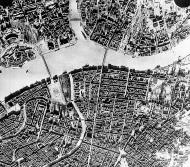









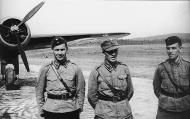
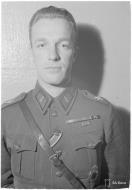
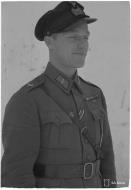
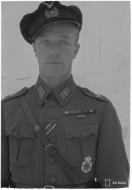
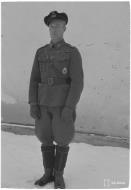
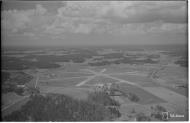
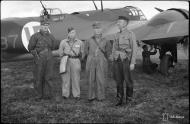











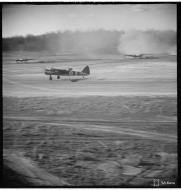



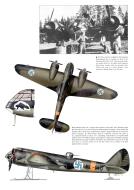



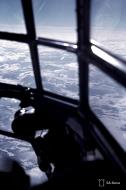

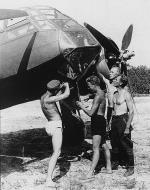
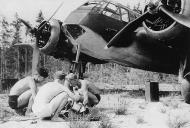






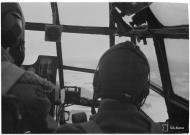

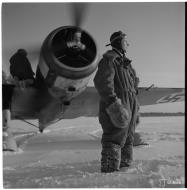
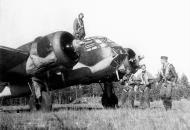




























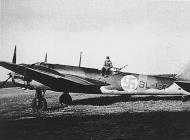
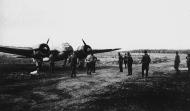





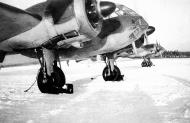




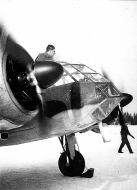


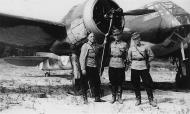






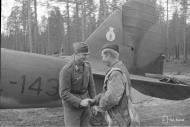
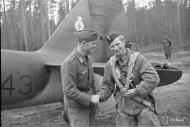








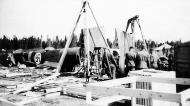






-ready-to-leave-for-Naarajarvi-1944-01.jpg)




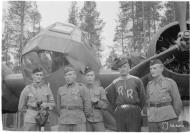
















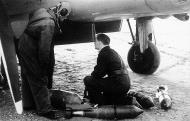

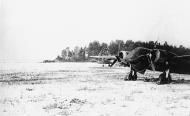







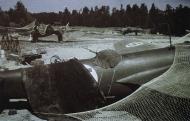



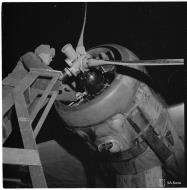



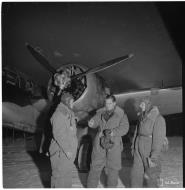







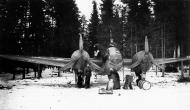


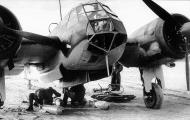


-28th-Sep-1941-01.jpg)
